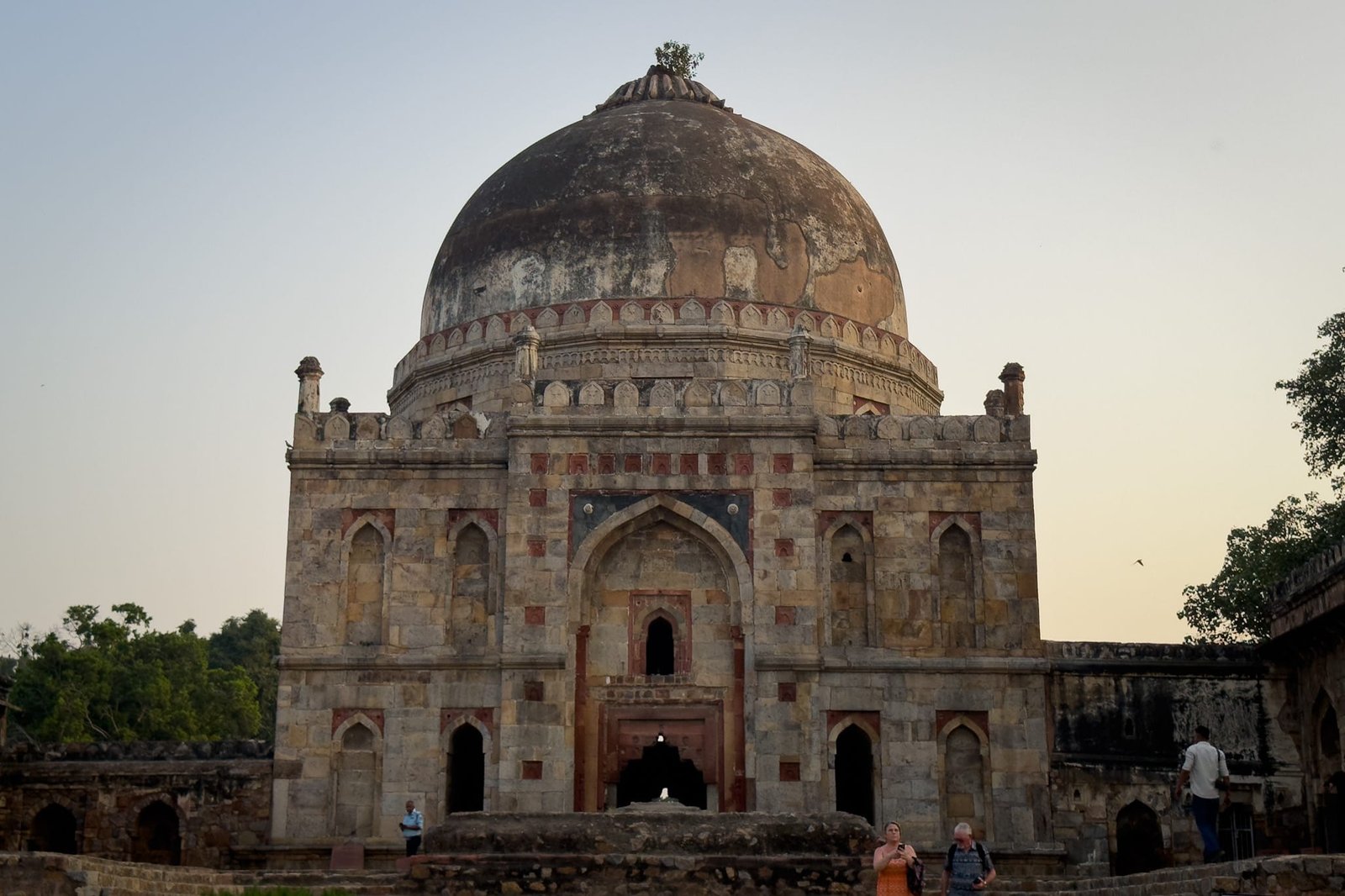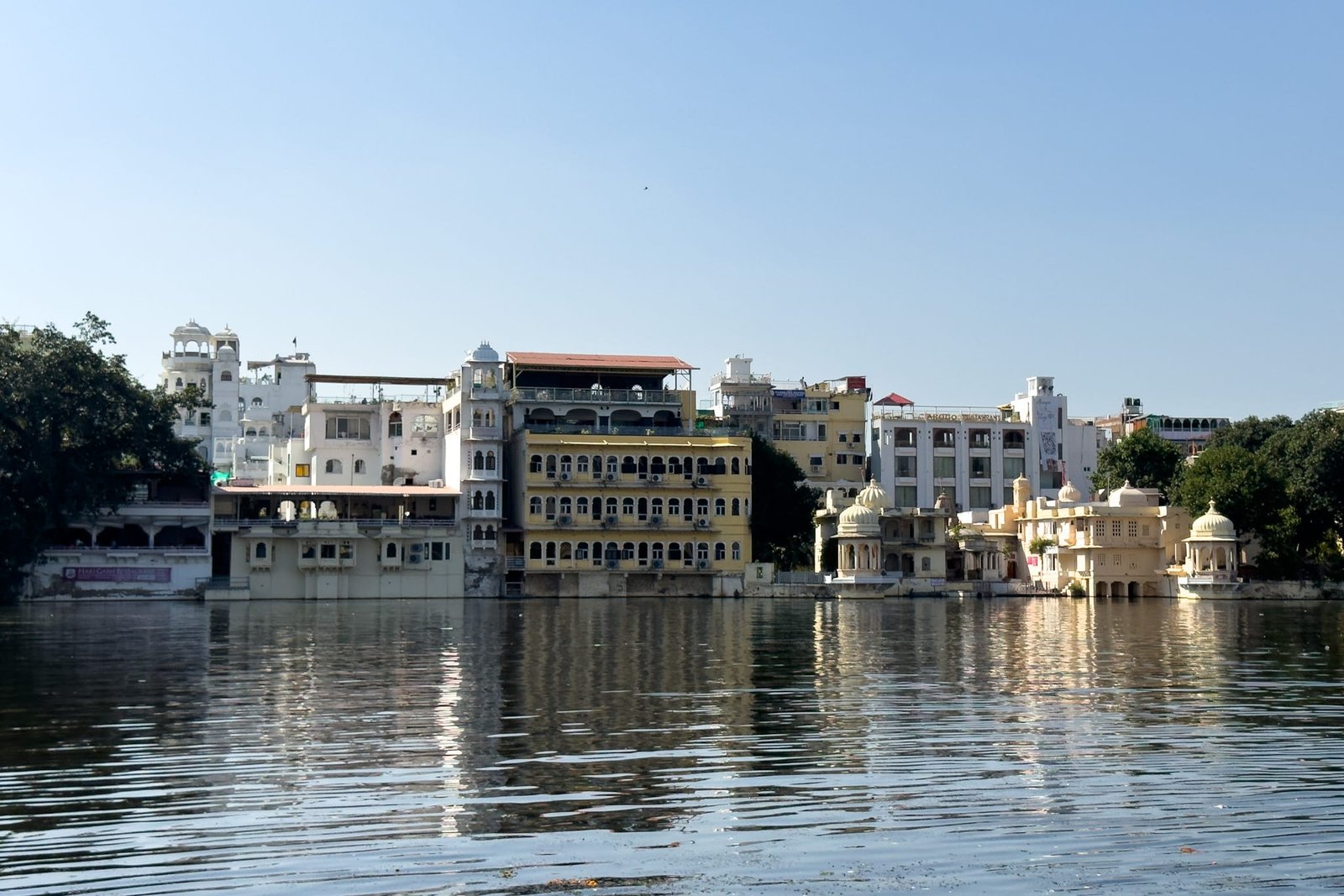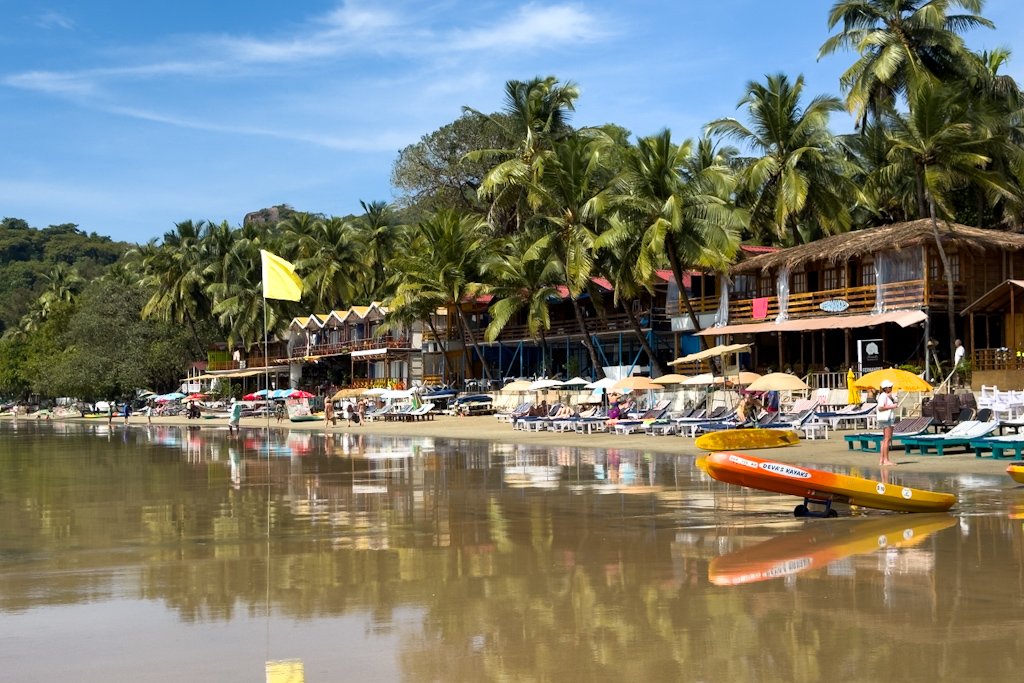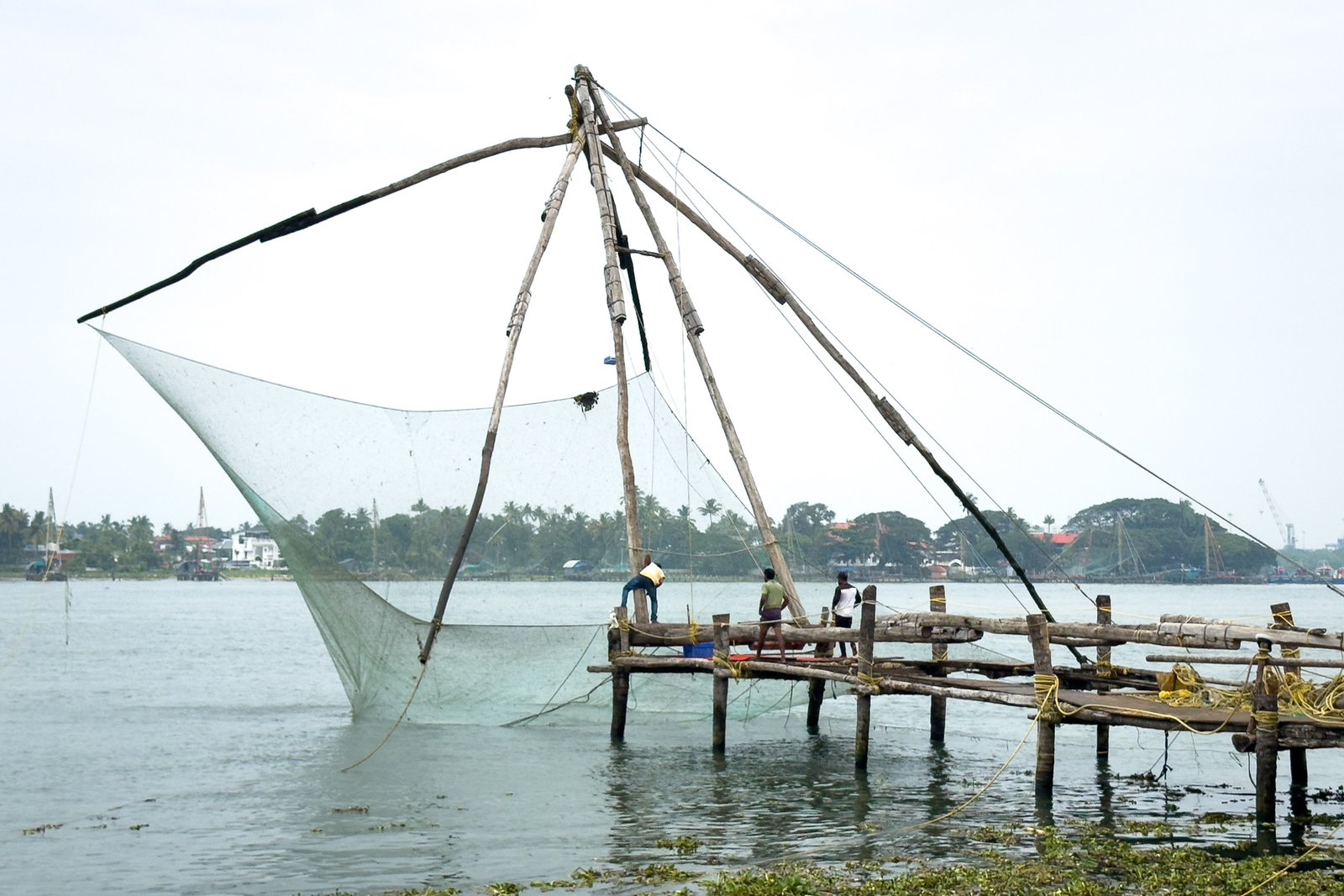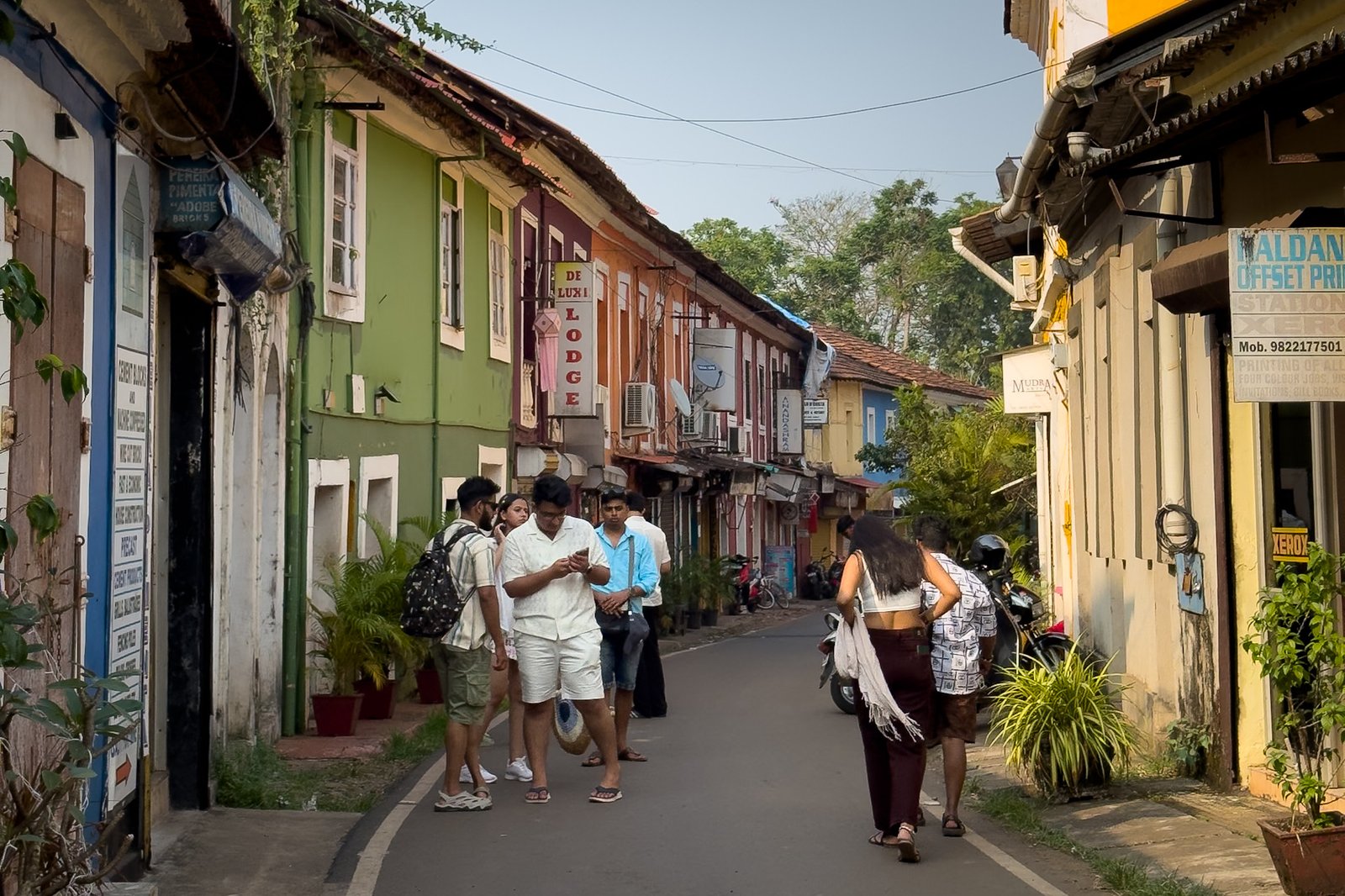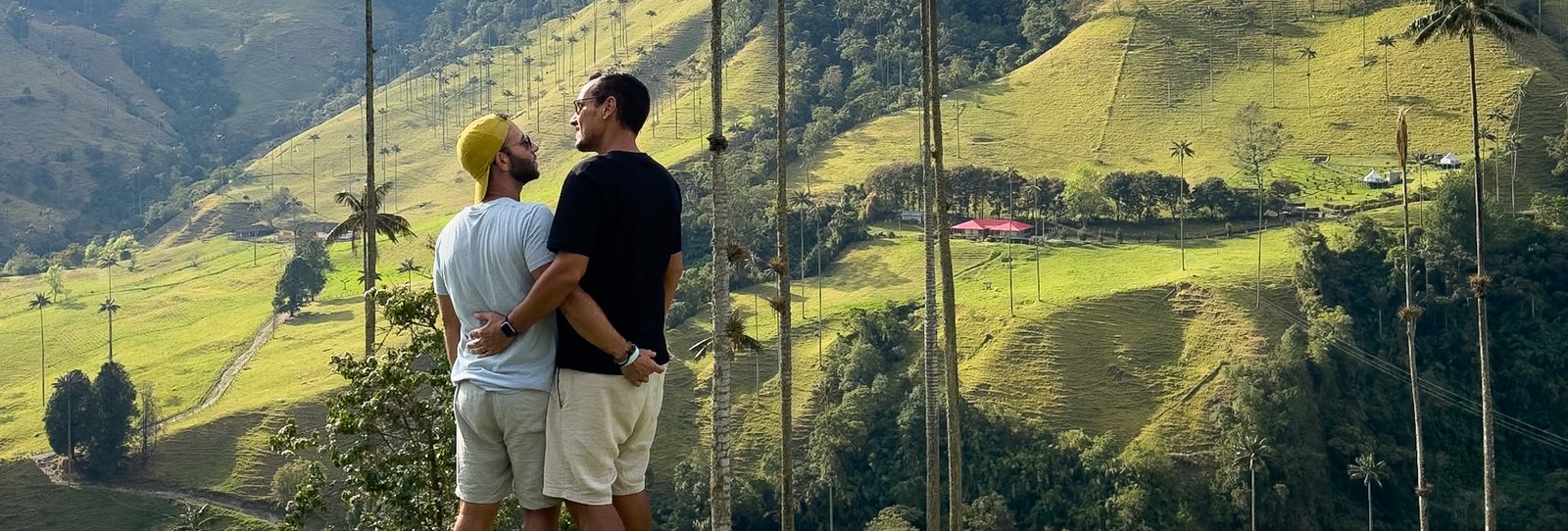India was a country that had been on our bucket list for a long time, but we kept postponing our visit. On one hand, we knew we needed time to explore India and get a good perspective on different places. On the other hand, some negative reports discouraged us from visiting, especially the complication of buying train tickets in India.
There are two main ways to purchase tickets: the simplest is through 12Go, and the other is through the official IRCTC website, which is more complex but also cheaper and gives you more control over bookings. In this post, you’ll find our experience using both platforms to buy train tickets in India during our first adventure in the country.
Table of Contents
Why Travel by Train in India?
Traveling by train in India is, for us, one of the best ways to explore the country. One of the main reasons is the price: train tickets are generally much more economical than flights, especially for long distances. This allows you to save money that you can invest in other experiences during the trip. Additionally, train stations are almost always located in city centers, making access much more convenient and faster than getting to airports, which are often outside urban areas.
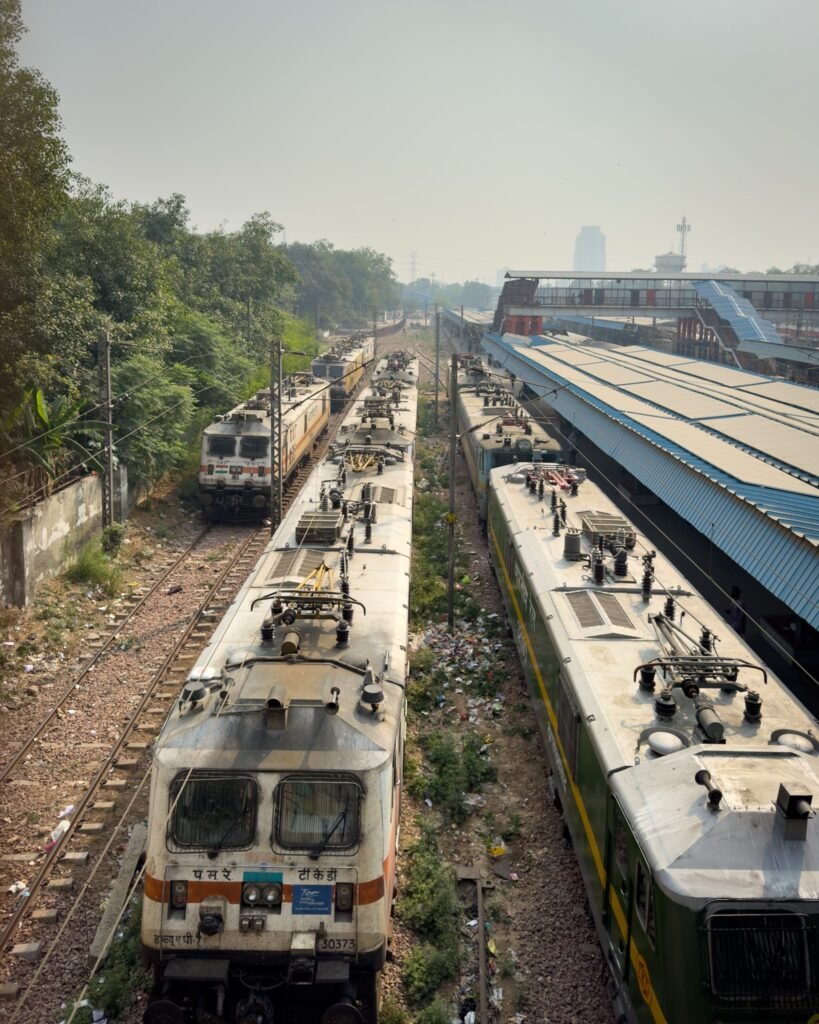
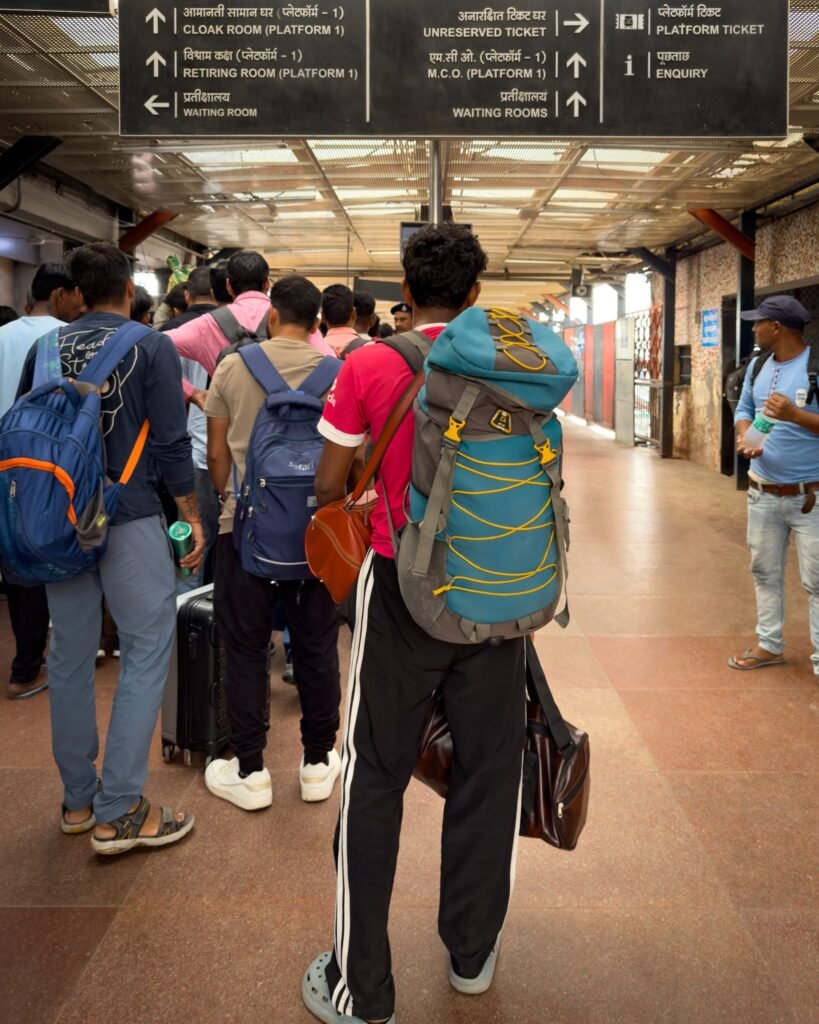
Another great advantage of traveling by train in India is the opportunity to immerse yourself in the local culture. Sharing carriages with locals, watching the scenery pass by, and feeling the unique rhythm of the country is something you simply can’t replicate on a plane. For us, this is the most authentic way to cross the country, offering a more genuine perspective on Indian daily life, away from tourist paths.
We’re also not purists, and we don’t think a 16-hour train ride costing €25 is necessarily better than a €50 flight. Our experience tells us that long journeys can leave us with less energy to enjoy the destination. In the case of trains in India, depending on the class, the experience can vary significantly. In the end, it’s all about personal preference and finding the right balance between a good experience and budget.
Types of Trains and Classes of Carriages
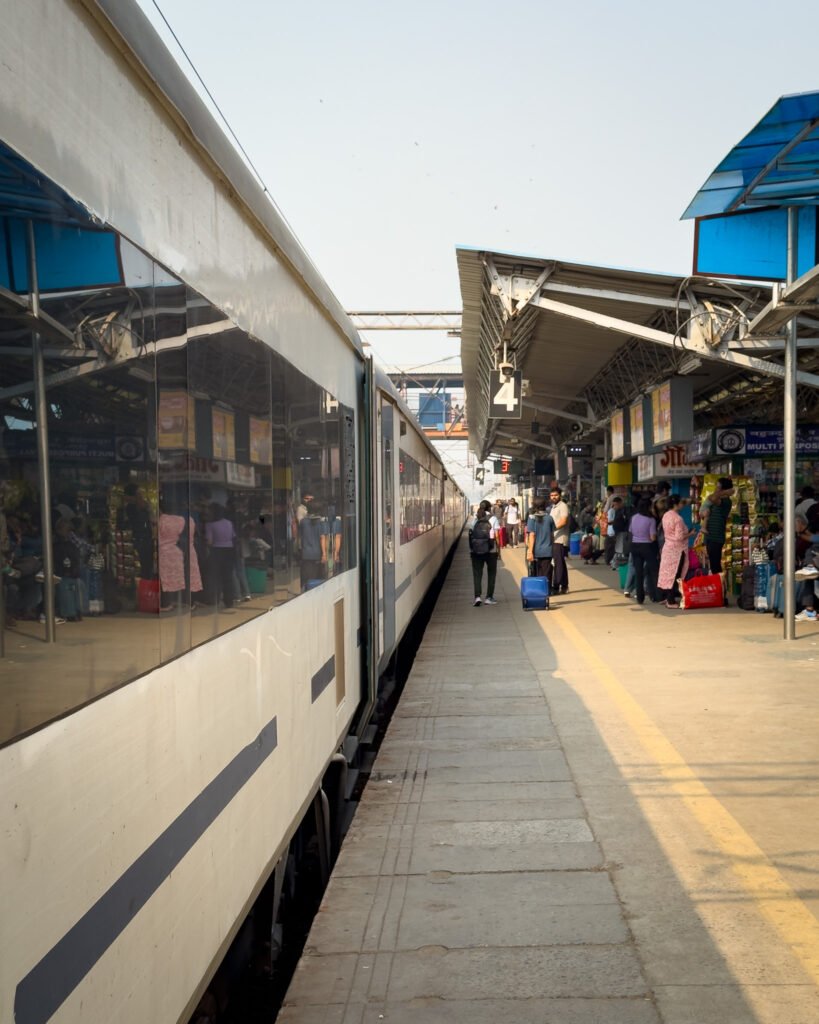
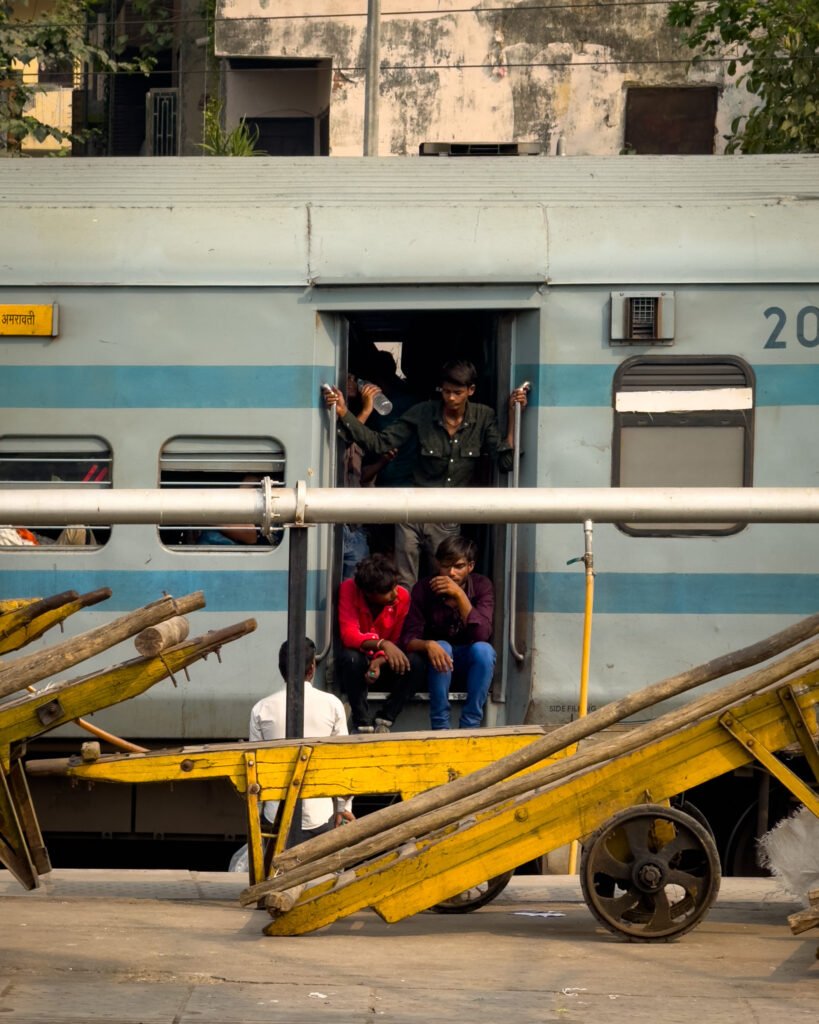
In India, choosing the right train can make all the difference in your journey. There are several types of trains and classes of carriages to suit different needs and budgets. Here’s a practical summary to help you make the best decision when planning your train trips in India:
Types of Trains in India
- Shatabdi Express: Fast and comfortable trains, ideal for short-distance travel. Meals are included in the ticket, and they’re known for punctuality.
- Vande Bharat Express: A fast and comfortable train, ideal for short and medium distances. We took the Delhi to Agra journey on this train, which reaches speeds up to 180 km/h. With air conditioning, comfortable seats, and meals included, it’s a great choice for those seeking speed and convenience.
- AF AII SF Express: A train that offers a fast and affordable journey, perfect for traveling between cities. We took the trip from Agra to Jaipur on this train, known for its efficiency and comfort. With air conditioning and adequate seating, it provides a pleasant experience and is a popular choice for exploring the region.
- Marudhar Express: A train that connects Jaipur to Jodhpur, ideal for comfortable and affordable travel. We took the trip from Jaipur to Jodhpur on this train, which offers a good balance of speed and comfort. With air conditioning and comfortable seating, it’s a popular choice for those wanting to explore the beauty of Rajasthan.
- Rajdhani Express: Excellent for long distances, offering meal service and extra comfort. These trains connect major cities across the country, providing speed and efficiency.
- Duronto Express: Non-stop trains, ideal for reaching destinations quickly. They also include meals and have various class options.
- Mail/Express: These are regular and common trains in India. They may have several stops but cover practically the entire country at affordable prices.
- Passenger Trains: Slow trains that stop at almost every station. Suitable for short and economical journeys but not recommended for long distances due to their slow pace.
- Toy Trains: Charming trains running along scenic routes, like the famous Darjeeling Himalayan Railway. Perfect for a unique and panoramic experience.
Train Classes in India

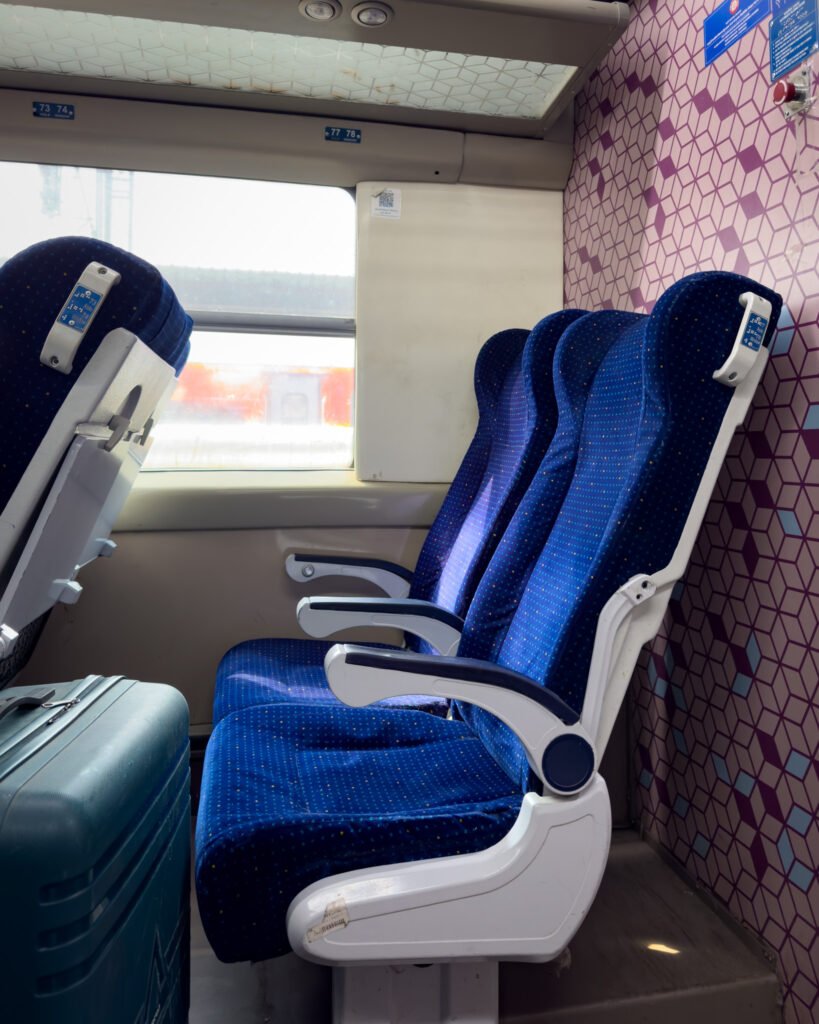
- First AC (1A): The most luxurious class, with private cabins, air conditioning, and bedding. Ideal for long overnight journeys if you’re looking for comfort and privacy.
- Chair Car (CC): Ideal for short trips, with comfortable seats and air conditioning. Common on Shatabdi Express trains and other short-distance trains.
- Executive Class (EC): The premium class on India’s short-distance trains, offering reclining seats, air conditioning, included meals, and onboard service for a comfortable, upscale travel experience.
- Executive Anubhuti (EA): A luxury premium class on Indian trains inspired by airline standards, featuring ergonomic seats, air conditioning, an entertainment system, and included meals, for a high-end travel experience.
- Second AC (2A): Simpler but still comfortable cabins with air conditioning. These cabins have four berths and curtains for privacy.
- Third AC (3A): A more economical option with air conditioning. Cabins have six berths and are less private but provide a comfortable experience at more affordable prices.
- Sleeper Class (SL): No air conditioning and open compartments, this is the most popular class among locals. It’s economical and offers an authentic perspective but can be less comfortable, especially on long trips and during the summer.
- General Class or Second Sitting (2S): The cheapest, non-reserved class, often quite crowded. It’s best to avoid it on long journeys unless you’re prepared for a more challenging experience.
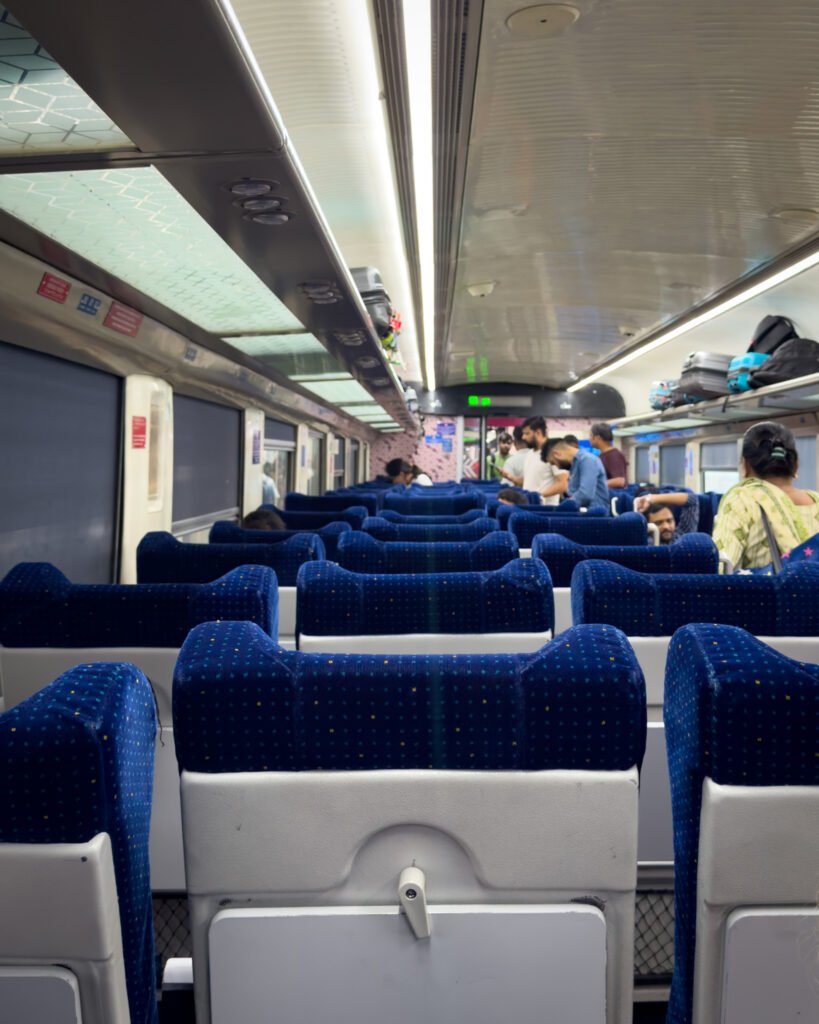
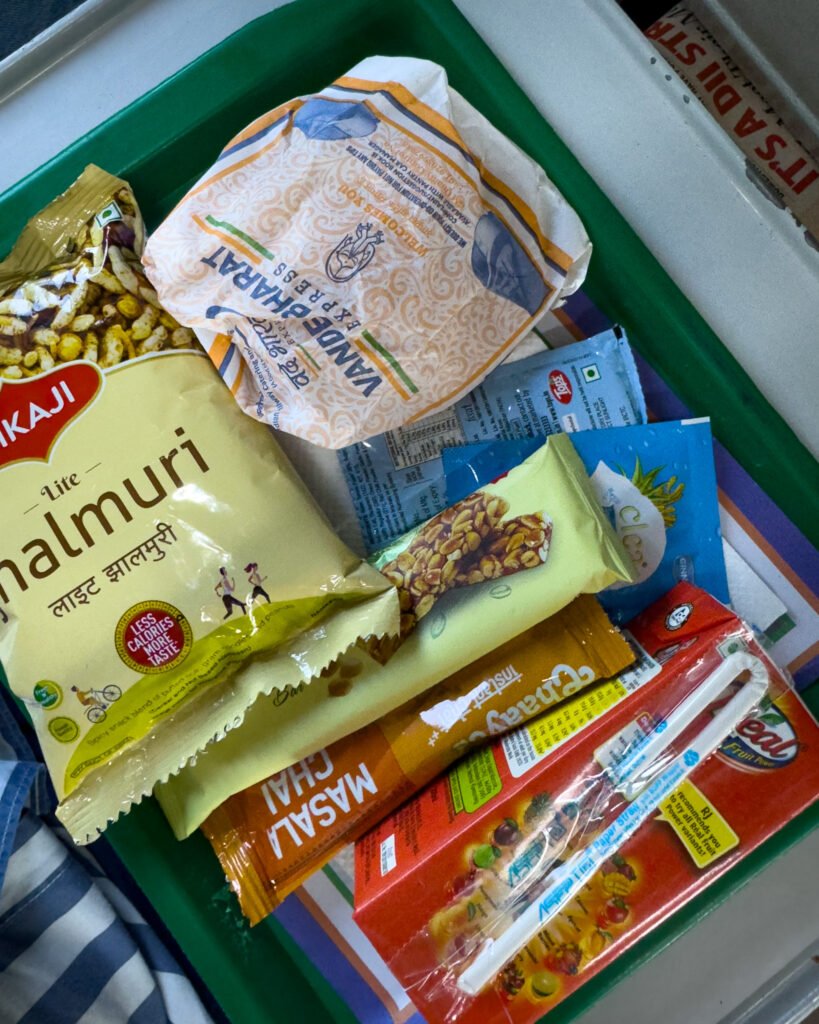
When choosing a train in India, consider the journey length, your budget, and the comfort level you want. For long or overnight trips, AC classes are a safe choice, while for short routes, Chair Car or even Sleeper can be economical and practical options.
How Far in Advance Can I Buy Train Tickets?
The advance booking period for train tickets in India varies depending on the class and train type. In our experience, we were able to book tickets up to 120 days in advance for higher classes, but we also encountered situations where seats could only be secured 30 days in advance for specific trains. Here’s a summary of general rules for different classes:
- 1AC (First Class AC), 2AC (Second Class AC), 3AC (Third Class AC), and Sleeper Class (SL): Most tickets for these classes open 120 days in advance. These are recommended classes for longer journeys, especially if you’re looking for more comfort.
- Chair Car (CC) and short-distance trains: Typically, tickets can be purchased 60 days in advance, ideal for shorter routes or daily travel.
- General Class: No advance reservations required, as this class is primarily for short trips and unreserved seats, with tickets available on the day of travel.
It’s worth noting that for some high-speed trains and very popular routes, such as the Rajdhani, Shatabdi, and Duronto Express, tickets tend to sell out quickly, so booking as early as possible is always recommended.
How to Buy Train Tickets in India with 12Go?
12Go is a platform with excellent usability, making the train ticket purchase process in India easier. To buy, simply open the main page in your browser, select the departure city, destination, and travel date. All available options for schedules and classes will be displayed immediately. 12Go acts as an intermediary in the booking process, meaning the booking confirmation is not immediate. However, payment is made when you submit the booking request.
In our experience, although 12Go is convenient, we encountered a situation where, after purchase, we had to wait several weeks for ticket confirmation. Eventually, we were informed that there were no available seats in the class we initially selected. 12Go contacted us and offered the option to choose a lower class, refunding the price difference.
Of course, being an intermediary and simplifying the process, tickets purchased through 12Go tend to be more expensive than on the official Indian booking site. However, the platform offers the option of a “guaranteed booking,” which means that if the ticket is not confirmed, 12Go will automatically try alternatives or refund the payment. This feature is especially useful when tickets are nearly sold out or if you want to avoid last-minute surprises.
How to Buy Train Tickets in India on the Official Website?
One of the main obstacles many people mention is creating an account on the official Indian railway website, which supposedly requires an Indian phone number (+91) for validation. This was the first obstacle we overcame, and I’ll explain how. The second challenge is related to difficulties in making payments with international credit cards.
How to Create and Validate an Account to Buy Train Tickets in India?
Contrary to what many think, it is not necessary to have an Indian phone number to create an account. Account validation with foreign numbers can be done using a credit card and paying a 100 rupee fee at the first login. Although this seems to contradict the second obstacle, it was not an issue for us.

The complication arises because the payment process offers various payment provider options, and some of them do not accept international cards, while others do. So, the key is to be patient and try the various options until you find one that works. We used the International/Domestic Credit/Debit Cards (Powered by Plural) payment provider to validate our IRCTC account.
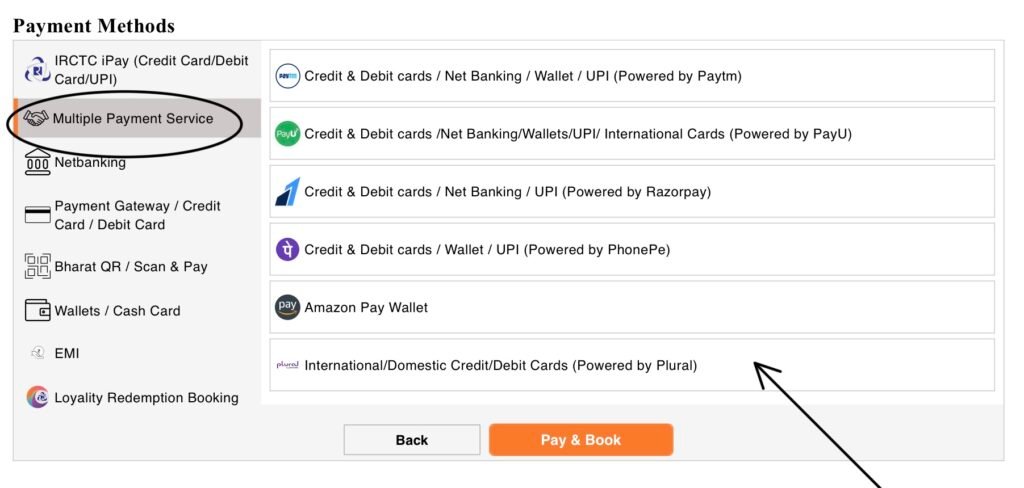
How to Proceed with the Ticket Purchase?
After activating your account, the next step is to browse the platform. Start by selecting the origin, destination, and travel date. The page will display all available options, including schedules and classes. Choose the option that best suits your needs, then add passenger details.
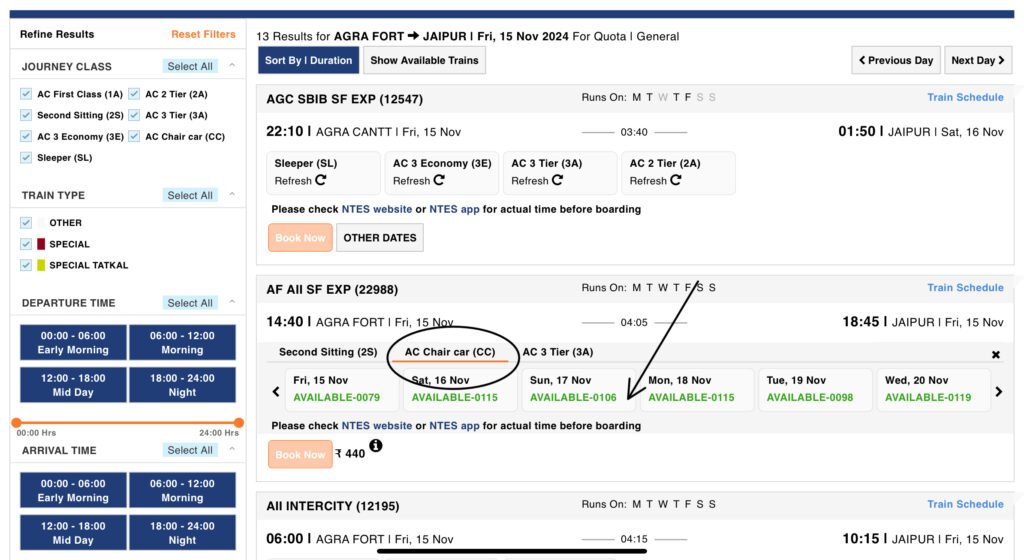
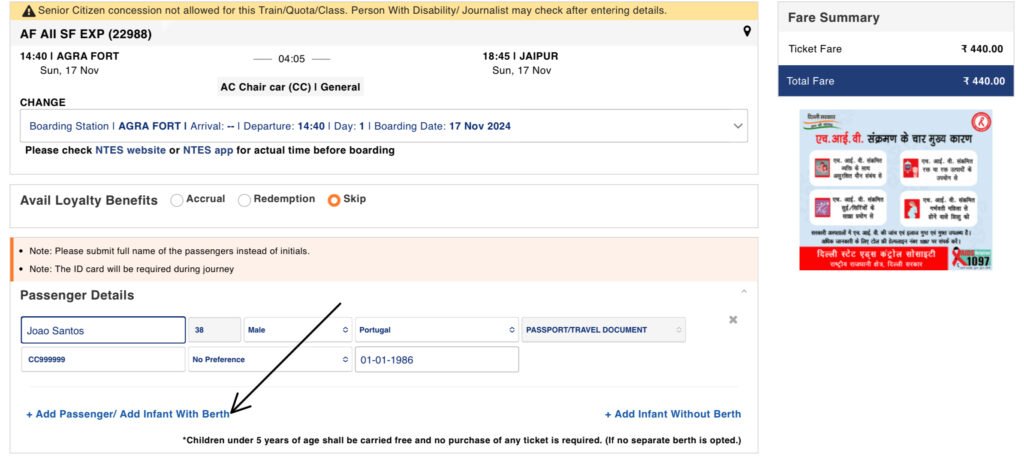
Once details are confirmed, you will be directed to the payment page. As mentioned earlier, it is essential to pay attention to the payment provider you choose. We used the International/Domestic Credit/Debit Cards (Powered by Plural) payment provider to complete the train ticket payment.
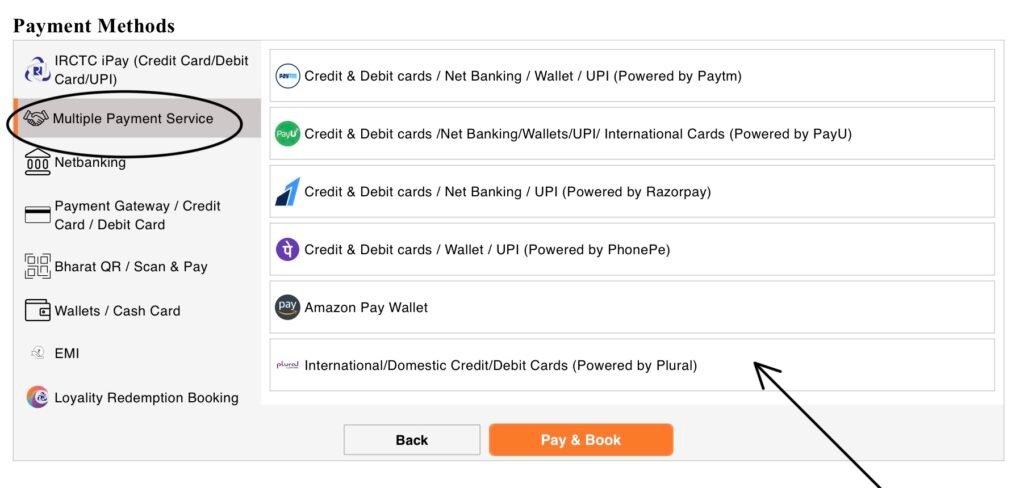
After completing the purchase, you will receive a confirmation email with all the details of your reservation. Thus, you’ll be ready to explore India with ease and without complications.
In our experience, we were not asked for any ticket or ID; however, we always kept digital copies of the reservation and payment confirmations. We used the Trainman app to track the status of our booking and train.
Buying on 12Go or the Official IRCTC Website?
When it comes to train travel in India, travelers can purchase tickets through 12Go or the official IRCTC (Indian Railway Catering and Tourism Corporation) website. Each platform has its own pros and cons, and choosing the best option can significantly impact your travel experience. Below, we explore the main features of each.
Buying on 12Go
Advantages:
- Ease of Use: The 12Go interface is intuitive and easy to navigate. Simply enter your departure point, destination, and travel date to quickly find all available options for timings and classes.
- Simplified Booking: The booking process is straightforward, avoiding the frustration of navigating multiple pages.
- Customer Support: 12Go offers support in English, ideal for international travelers who may not be fluent in Hindi or other Indian languages.
- Real-Time Information: The platform provides up-to-date seat availability and schedule information, allowing you to make informed decisions.
Disadvantages:
- Higher Cost: As a middleman, 12Go charges additional fees, making it more expensive than purchasing directly on IRCTC.
- Delayed Confirmation: Reservation confirmation may take some time, especially during peak periods, and seat availability can change.
- Limited Payment Options: Some payment options, especially for international credit cards, may not be available.
Buying on the Official IRCTC Website
Advantages:
- Lower Price: Buying directly on IRCTC is generally more economical, as it avoids intermediary fees.
- Variety of Options: You have access to all available classes and schedules without restrictions imposed by intermediaries.
- Advance Booking: IRCTC allows tickets to be booked up to 120 days in advance, depending on the train type.
- Full Control: By using the official platform, you have more control over your purchase and can access detailed information.
Disadvantages:
- Less Intuitive Interface: The IRCTC interface may be confusing for users unfamiliar with the Indian system.
- Account Creation Required: Creating an account can be an obstacle, especially if you don’t have an Indian phone number.
- Complicated Payments: The payment process may be complex due to the range of providers, with some not accepting international cards.
When deciding between 12Go and the IRCTC website, consider your personal needs and preferences. If you prefer a simpler booking experience and English support, 12Go might be the best option, even at slightly higher prices. However, if your focus is on savings and variety, the official IRCTC website is ideal. Assess what’s most important to you and prepare to explore vibrant India by train!
Top Tips for Train Travel in India
Traveling by train in India is one of the best ways to explore the country, offering stunning scenery and unique cultural experiences. Here are some essential tips to help you make the most of your train journey in India.
- Plan Ahead: India has an extensive railway network, but trains can fill up quickly, especially during holidays or weekends. Try to book tickets as early as possible to secure your desired seat.
- Choose the Right Class: Indian trains offer a range of classes, from the luxurious AC 1st Class to the economical Sleeper Class. Your choice depends on your budget and preferred experience. For long distances, AC 2nd Class or Sleeper Class may be good options, offering comfort at reasonable prices.
- Check Timings and Punctuality: Train schedules can change, so it’s important to frequently check the IRCTC website or 12Go app for updates. Delay information is also updated frequently, helping you plan connections more effectively.
- Bring Food and Water: While many trains offer meal services, quality can vary. Pack snacks and water, especially for off-peak hours or longer journeys.
- Arrive Early at the Station: Indian train stations can be quite busy, and platforms may change at the last minute. Arrive early to avoid the stress of missing your train and to have time to orient yourself at the station.
- Use Apps for Assistance: Apps like 12Go, Trainman, and IRCTC are incredibly useful for checking schedules, booking tickets, and tracking your train’s status. Stay updated with these tools to make your journey easier.
- Be Patient and Flexible: Train travel in India can be a unique and full-of-surprises experience. You may encounter delays or other issues. Stay calm, relax, and enjoy the journey—train travel can be as memorable as the destination!
- Engage with Locals: Trains are a great opportunity to get to know local culture. Engage with locals, share stories, and enjoy the company. Indian hospitality is a valuable experience that can enrich your trip.
With these tips, you’ll be well-prepared to explore vast and vibrant India by train.
Common Train-Related Scams in India
Train travel in India is an amazing experience, but, as anywhere, it’s important to be aware of potential scams. Here are some common train-related scams in India, along with tips on how to avoid them.
- Fake Ticket Sales: One of the most common scams involves the sale of fake or non-existent train tickets. Scammers may create websites or social media profiles pretending to be ticket agents.
- How to avoid: Always buy tickets through official sources like the IRCTC website or trusted platforms like 12Go. Be cautious of deals that seem too good to be true.
- Overcharging: Some people may offer ticket booking services at inflated prices, claiming they help you avoid queues or complications.
- How to avoid: Check official prices before accepting any offer, and never pay extra for services you can handle yourself.
- Fake Station Agents: Some individuals pose as station agents, offering help to buy tickets or find your train. These “agents” might charge exorbitant fees or sell invalid tickets.
- How to avoid: Whenever you need assistance, go to the official station counters. Station staff are there to help and won’t charge you for it.
- Fake Money Exchange: Some scammers offer currency exchange services at stations, advertising rates that seem favorable.
- How to avoid: Only exchange money at authorized exchange offices or banks, where rates are clear and the process is secure.
- Watch Out for Bag Thieves: Train stations can be busy places, and thieves may take advantage of the commotion to steal luggage.
- How to avoid: Always keep your luggage in sight and use locks. If traveling with a backpack, consider a secure one that can be attached to a fixed object.
- Fake Food Offers: Some people may offer food or drinks on board, charging exaggerated prices or providing low-quality items.
- How to avoid: Bring your own snacks or buy food from official kiosks at stations. When possible, check reviews of food services before purchasing.
- Fake Security Officers: Scammers may pretend to be security staff or police, asking questions to try to steal your belongings or extort money.
- How to avoid: Always check the ID of any official approaching you. If in doubt, go to an official station area for assistance.
- Train Canceled: A common scam occurs when your train is canceled. Scammers might try to convince you to go to a travel agency or counter, claiming they’ll help you get new tickets, whether for another train or even a flight. This can lead to overcharging or the sale of fake tickets.
- How to avoid: Always confirm your train’s status through official sources, like the IRCTC website or mobile app. If your train is canceled, go to an official counter at the station for information and proper assistance.
Being aware of these scams can help ensure that your train journey in India is safe and enjoyable. By following these tips and staying alert, you can focus on enjoying the journey and the stunning landscapes India has to offer.


